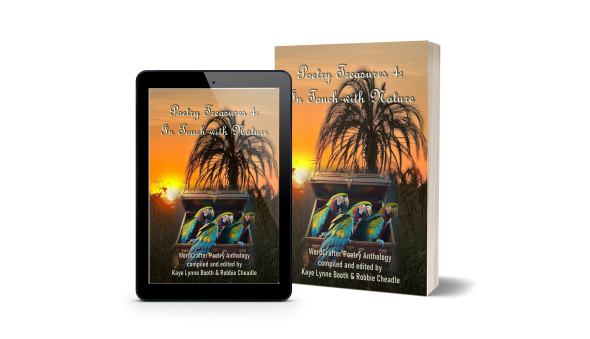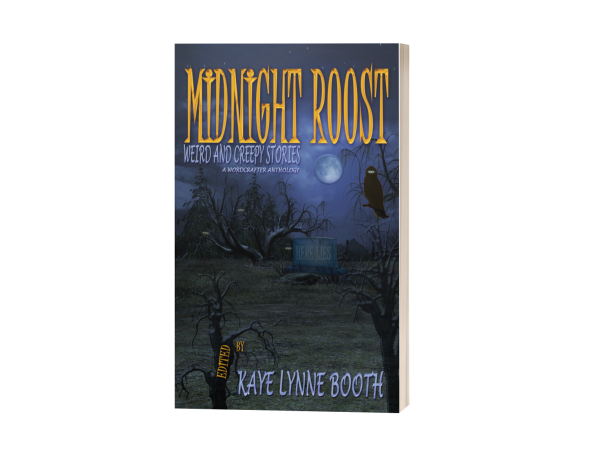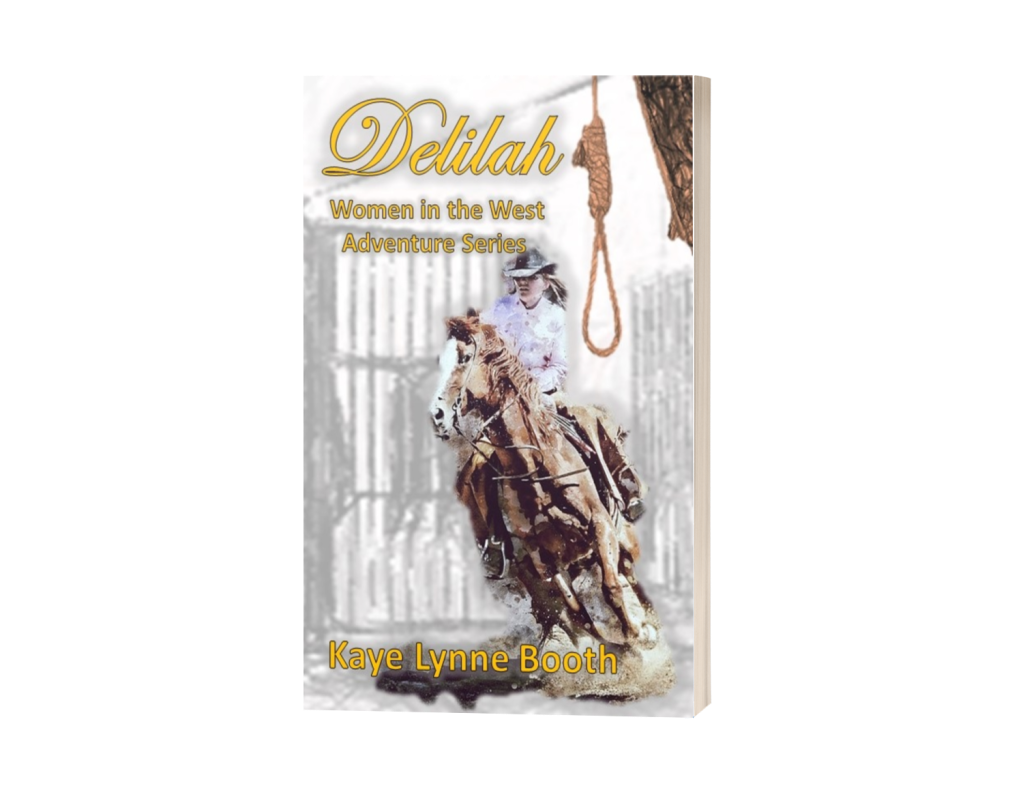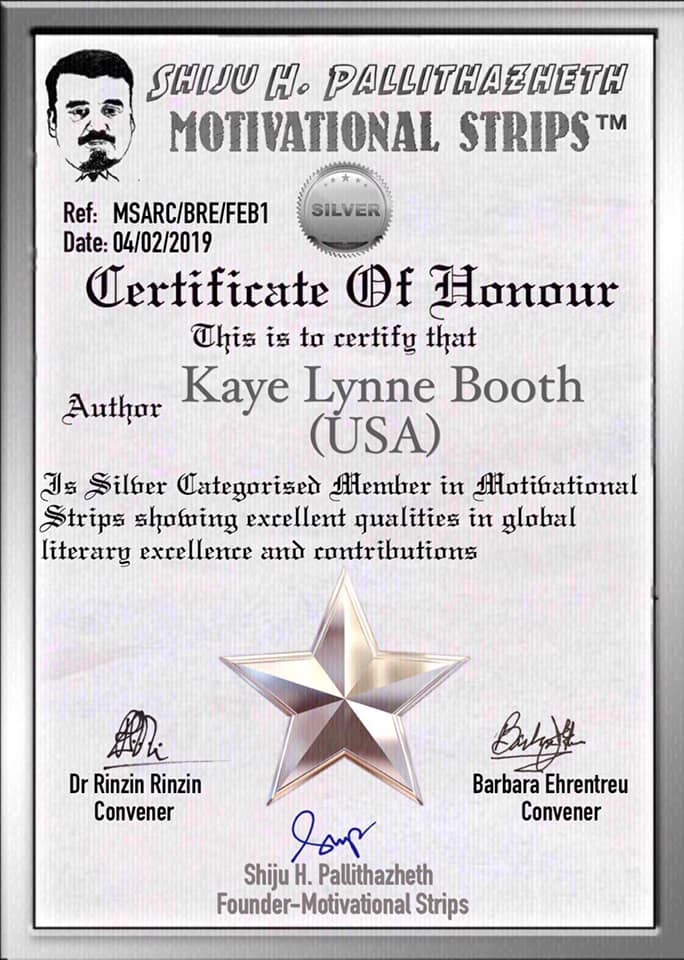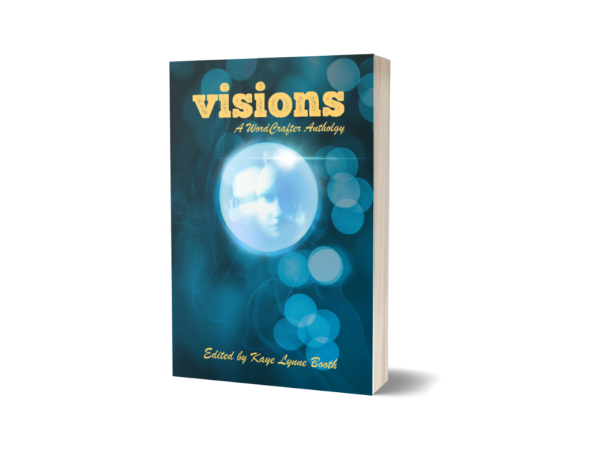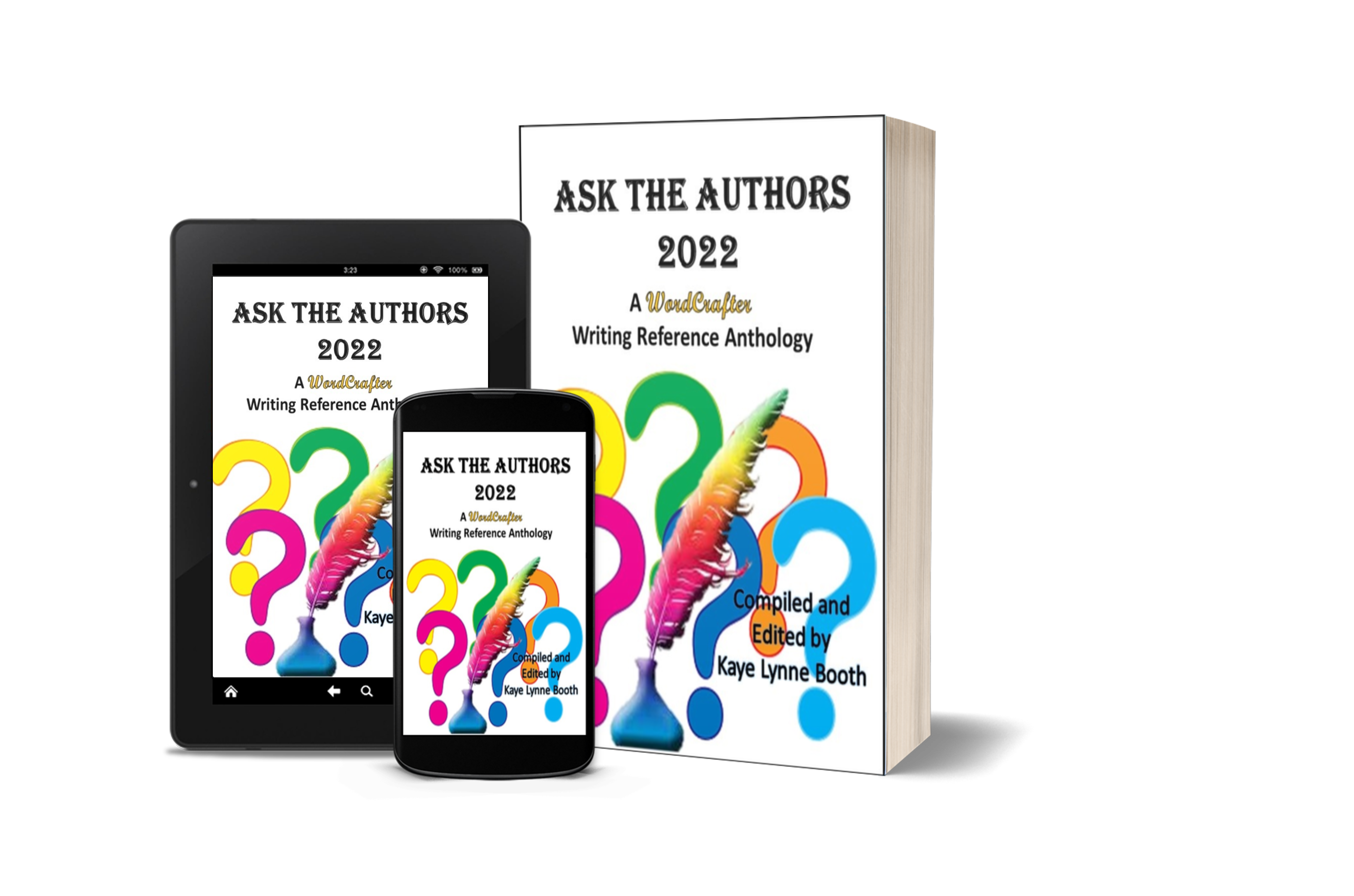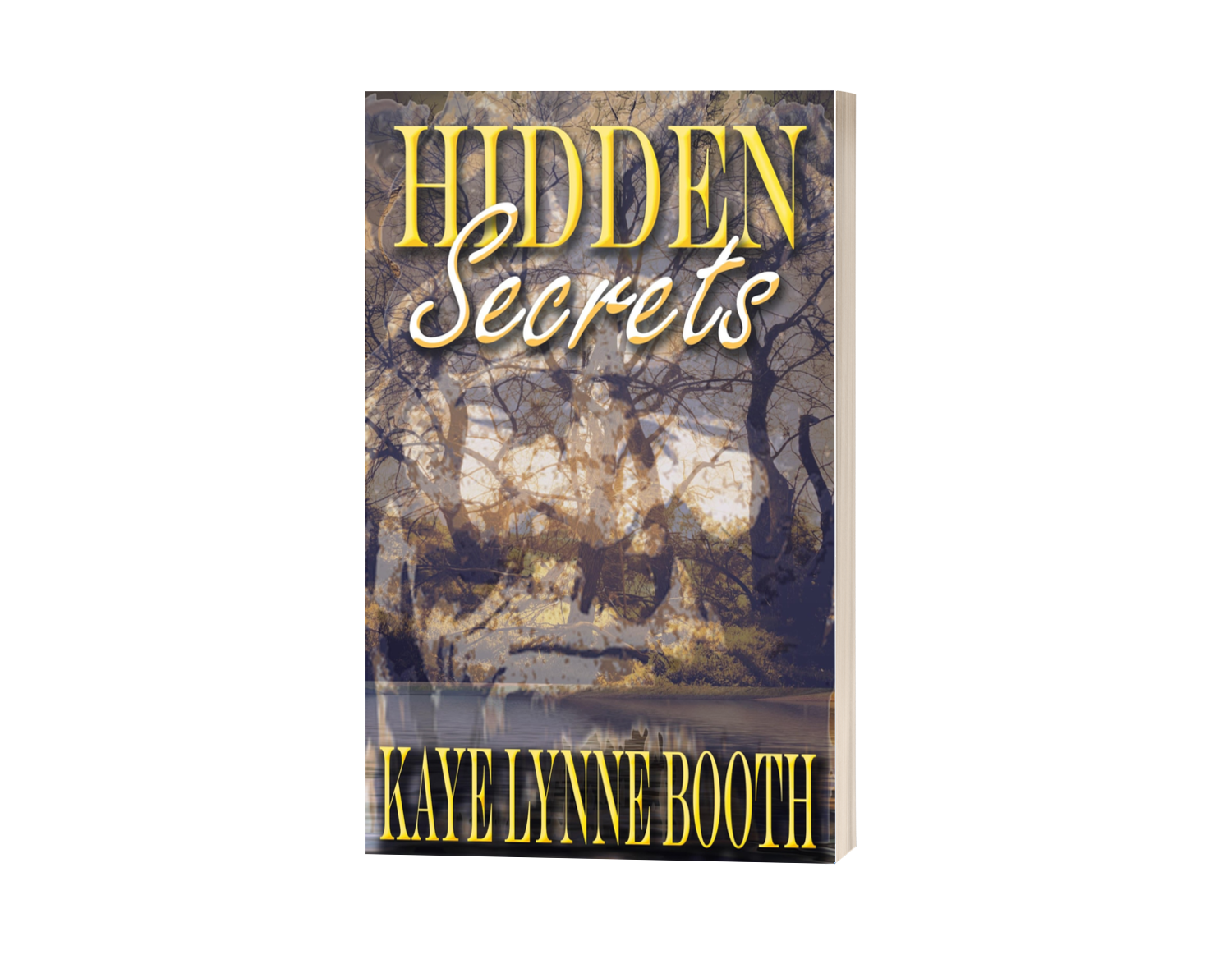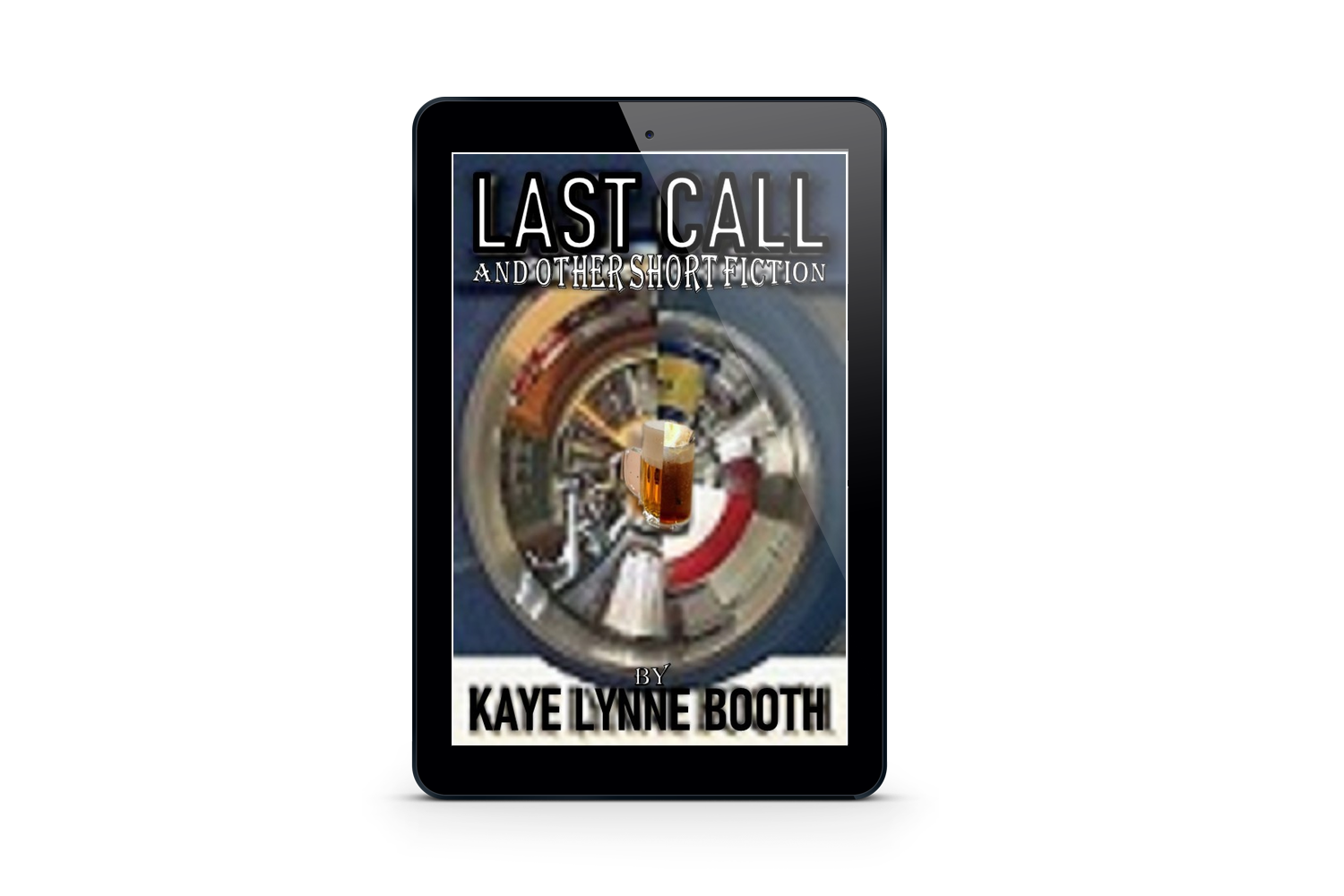Day 3 of the WordCrafter “Sarah” Book Blog Tour
Posted: May 8, 2024 | Author: kayelynnebooth | Filed under: Audio Excerpt, Author Interview, Blog Tour, Book Promotion, Book Release, Books, Fiction, Giveaways, Historical Fiction, Historical Inspiration, Interview, Western, Women in History, Women's Fiction, WordCrafter Book Blog Tours, WordCrafter Press | Tags: Audio Reading, Author Interview, Excerpt, Historical Fiction, Kaye Lynne Booth, Sarah, Western, Women in the West, Women's Fiction, WordCrafter Book Blog Tours | Leave a comment
Please join us over at Book Places for Day 3 of the WordCrafter Sarah Book Blog Tour, where host Kay Castenada interviews me, the author, Kaye Lynne Booth, and my reading of an excerpt from the book. Remember to comment for entry in the giveaway and you could get a free digital copy of the book. I hope to see you there.
Day 3 of the WordCrafter “Poetry Treasures 4” Book Blog Tour
Posted: April 10, 2024 | Author: kayelynnebooth | Filed under: Anthology, Author Interview, Book Release, Books, Poetry, Poetry Readings, WordCrafter Book Blog Tours, WordCrafter Press | Tags: Author Interview, Emily Gmitter, Poetry, Poetry Anthology, Poetry Reading, Poetry Treasures 4: In Touch with Nature, Selma Martin, WordCrafter Book Blog Tours, WordCrafter Press | 6 Comments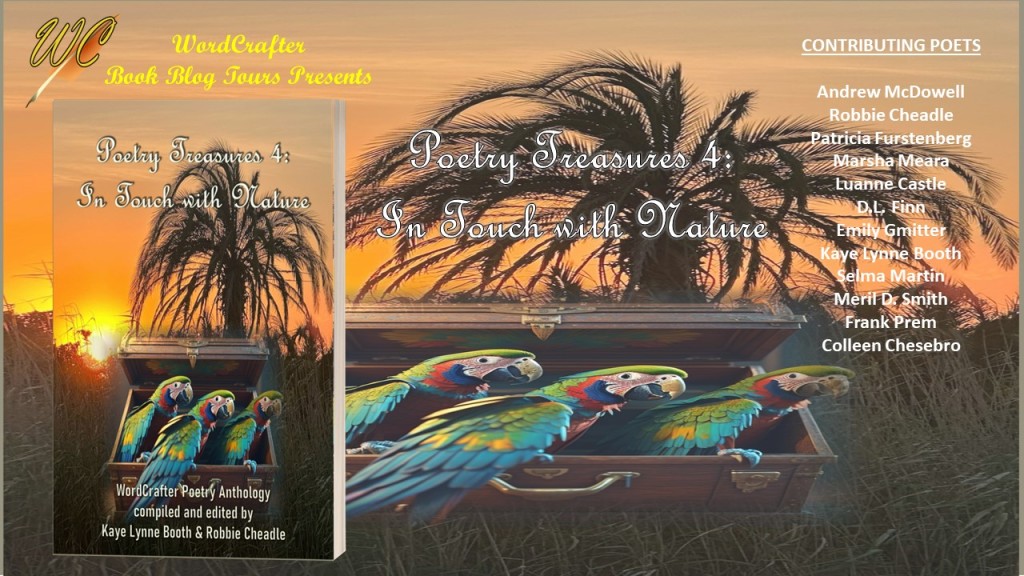
Day 3 of the Wordcrafter Poetry Treasures 4 Book Blog Tour finds us over at Book Places where Kay Castenada interviews contributing poet, Emily Gmitter, and Selma Martin shares a beautiful reading of her poem “The Bridge Home”. Please join us in sending of this very special poetry anthology, Poetry Treasures 4: In Touch with Nature. Be sure to leave a comment to enter the giveaway, too.
My Interview with Sean Taylor on Bad Girls, Good Guys, and Two-Fisted Action
Posted: March 19, 2024 | Author: kayelynnebooth | Filed under: Books, Fiction, Interview, WordCrafter Press, Writing | Tags: Author Interview, Bad Girls Good Guys and Two-Fisted Action, Kaye Lynne Booth, Sean Taylor | 1 CommentI just came across this interview I did back in January with Sean Taylor for Bad Girls, Good Guys, and Two-Fisted Action. I’m proud of this one, so I hope you’ll check it out.
https://seanhtaylor.blogspot.com/2024/01/kaye-lynne-booth-who-almost-wasnt.html
My Interview on “Write Any Genre”
Posted: December 28, 2023 | Author: kayelynnebooth | Filed under: Interview, WordCrafter Press, Writing | Tags: Author Interview, Kaye Lynne Booth | 1 CommentMary Deal was kind enough to interview me on Write Any Genre. Drop by and check it out. It’s pretty awesome.
Day 2 of the WordCrafter “Midnight Roost” Book Blog Tour is over at Undawnted
Posted: October 17, 2023 | Author: kayelynnebooth | Filed under: Anthology, Audio Excerpt, Author Interview, Blog Tour, Books, Dark Fantasy, Fiction, Ghost Stories, Giveaways, Guest Post, Horror, Interview, Paranormal, Review, Science Fiction, Short Fiction, Speculative Fiction, Stories, WordCrafter Book Blog Tours, WordCrafter Press | Tags: Author Interview, Christa Planko, Giveaway, M J Mallon, Midnight Roost, Reading, Review, WordCrafter Book Blog Tours, WordCrafter Press | 7 CommentsJoin us over at Undawnted for Day 2 of the WordCrafter Midnight Roost Book Blog Tour with a guest post and an interview with contributing author Christa Planko and a reading from MJ Mallon. Drop by and join in on the fun while learning more about Midnight Roost: Weird and Creepy Stories. And if you leave a comment
http://www.undawnted.com/2023/10/wordcrafter-blog-tour-for-midnight.html
Growing Bookworms – Meet children’s fiction and adult fiction and non-fiction author, Toni Pike and a review #growingbookworms #childrensfiction #bookreview
Posted: June 14, 2023 | Author: robbiesinspiration | Filed under: Book Promotion, Book Review, Books, Children's Books, Fiction, Mystery, Review, Thriller | Tags: Author Interview, Book Review, Children's Books, Cody Brody and the Step Mother From Outer Space, Growing Bookworms, Robbie Cheadle, The MAgus Covenant, Toni Pike, Writing to be Read | 61 Comments
Today, I am delighted to introduce children’s and adult fiction author, Toni Pike. Toni is a prolific writer with at least two non-fiction books, six adult thrillers, one women’s fiction, and two children’s books, all available from Amazon. Today, we are focusing the discussion on Toni’s two children’s books in the Brody Cody series. I’ve read both and they are wonderful for middle school children.
I love your books about Brody Cody as they are filled with excellent, age-appropriate humour without resulting in facetious child characters which is a pitfall with many modern children’s books. Is there any particular children’s book author whom you admire and consider to be a role model for your writing?
Thank you so much for your lovely comments, Robbie – I’m delighted that you liked my characters. That means so much to me, coming from such a wonderful writer.
Roald Dahl is my favourite children’s author – his irreverent stories and characters are so wickedly delightful, and his plots are so beautifully constructed. I find children love this irreverence, and I was horrified to read recently that his stories were to be “sanitised” for the modern world. I think young readers could only benefit from enjoying his classic stories.
One of my other favourite role models is Judy Blume – I love the characters and familiar situations in “Tales of a Fourth Grade Nothing.”
Is Brody Cody entirely fictitious or are some of his characteristics based on real life models?
I always say that they are entirely a figment of my imagination – but quite a few aspects of Brody’s character are drawn from various real-life situations. In particular, I drew on memories of my own children and their friends, and also some snippets and ideas from children I taught at school. Having said that, nothing would be recognisable. I also drew on my own experience of childhood – even though that was a very long time ago! Two examples were Brody’s reluctance to get involved with extra-curricular activities, and also his insecurities, things Brody and I have in common.
How do you go about ensuring the language and flow of ideas in your children’s books are appropriate for the target age group?
Whether it’s for adults or children, I always try to write fast-moving stories that are plot-driven to keep the reader turning the page. That style seems suit me best, and it’s one of the reasons I like writing thrillers. To keep the language age-appropriate, I tried to think of how my children spoke when they were that age. I also made sure I used simple words and sentences, and always attempted to add humour. The setting was Australia, which of course is my home, so I knew the local idioms. I didn’t worry too much about the latest slang expressions – I tried to avoid that.
The theme of your first book, Brody Cody and the Stepmother from Outer Space, is very relevant in our modern age of frequent broken families and remarriages. Was there anything specific that compelled you to write this type of story? What were your aims with this book?
I wanted to write about a little boy who had lost his mother, because that immediately created sympathy for the character. I wanted it to be both scary and funny, but to have a very positive message about children and parents. I know there are a lot of blended families these days, so I hoped it would strike a chord but also be something all children could enjoy.
What are your goals for the Brody Cody series? Can we expect another book in this series soon?
I have a list of ideas for future Brody Cody stories, and want to add to the current two-book series. However, I also love writing books for adults, and I’m currently working on another thriller – which is still at a very early stage. I feel torn between the two, and don’t want to disappoint my grown-up readers who’ve followed me for a few years now. So, for the moment, I think my adult writing is winning.
Books for children are harder to market than books for adults. How do you go about marketing your books and what works best for you?
Attracting readers for the series has been far more difficult than I anticipated – much more so than for adult books. Of course, that’s only my experience and other writers may not find that. I was thrilled with the response from those who did read them, and many of the reviews were wonderful. But I would prefer to find a wider audience.
I use the same techniques for marketing that I used for my other books The first essential is to have some reviews – and I send out advance copies for that. I enrol my books in Kindle Unlimited, and have both the ebooks and paperbacks on Amazon. I find reads on Kindle Unlimited account for a fair proportion of my royalty income. Occasional free days, especially for the first book in the series, helps to boost subsequent sales of all books in the series and also helps to get some reviews. I also use Amazon sponsored ads, targeting similar books and authors. I do, however, keep a tight rein on my budget for that.
The best marketing tool of all, though, is a supportive writing community. I’ve become good friends over the last few years with other writers like yourself from all over the world, and supporting and sharing each other’s writing and blog posts is a great way to spread the word. Your Growing Bookworms series about children’s writing is a great inspiration for children’s writers, and a great learning tool for parents.
My review of Brody Cody and the Stepmother from outer space

This book is a hilarious and fun read for young readers aged 7 to 13 years old. It is quite reminiscent, with its quirky and slightly dark humour, of Roald Dahl’s books, in particular, it reminded me a bit of James and the Giant Peach where James’ parents are eaten by a rampaging rhinoceros.
Cody, the young hero if this book, is raised by his relaxed and nonchalant father after his mother is mowed down unexpectedly by a runaway bus. Cody is spared because he flies out of his pram and across into the hands of the police constable who catches him like a baseball.
Cody is a happy boy who lives with no rules and little parental intervention. His father works from home in the afternoons, and is not given to checking on Cody’s homework or making sure it is done. They have an interesting diet too that comprises of sweet and sickly cereal in the morning and some fabulously unhealthy father created meals in the evenings.
Cody is happy and doesn’t believe he needs a mother like other children have. He has freedom and he is happy living with his father.
One day, Cody’s father needs to go away to an out-of-town conference. Cody cannot go with him and is sent to his friend’s home for this period. Cody’s friend has a mother and she sets about trying to mend Cody’s lackadaisical ways. Just before Cody is due to go home, he gets a quick call from his father telling him he has met and married a woman he met at the conference.
Cody is horrified and returns home quite determined to reject this new mother, but things don’t go quite according to plan. Cody discovers things about his new mother than lead him to believe she is an alien.
This really is a rollicking good story and young children will love it.
My review of The Magnus Covenant

The Magnus Covenant is an exciting thriller that starts of with an unusual and strange murder. From there the excitement and pace just keep increasing, keeping you on the edge of your seat.
Jotham Fletcher and his girlfriend, Antonella Pavoni, a lecturer at the University of Rome, arrive at a famous Catholic Church where Jotham is expecting to deliver a lecture about Simon Magnus just in time to view the body of an elderly man in a black cape who may have committed suicide. As an expert on Simon Magnus, a cult leader from the time of Jesus, who thought he should be the head of the church and who was believed to have been a magician, Jotham mentions to the police the similarities between the deaths of Simon Magnus and this old man. Unfortunately, Jotham’s comments and interventions make him a prime suspect for murder.
Jotham does give his lecture and is the recipient of an extraordinary question from a journalist who subsequently disappears. He is also the recipient of antagonistic comments from a young Catholic brother who is also a member of the audience.
Shortly after the delivery of the lecture, Jotham is kidnapped and becomes embroiled in a complicated intrigue involving the members of the Simon Magnus cult, which has been in existence for 2,000 years, a brotherhood of extreme Catholics and a wealthy individual who may be the cause of all the agitation through the discovery and restoration of an ancient document. Jotham quickly realises that he can’t trust anyone he knows or meets and that his life is in danger.
Jotham is a great character. He has suffered personal loss through the deaths of his wife and child and is struggling with his faith. He’d thrown himself into researching Simon Magnus as a distraction from his loss and emotional turmoil. The deception of many people around him comes as a complete surprise to Jotham and he gets himself into a mess. He is able to pull himself together, discover his survival instincts and set about unravelling the intrigue all around him.
I thought the plot of this book was clever and interesting and the action kept me interested throughout.
About Toni Pike

Toni Pike is a multi-genre author who enjoys writing page-turning fiction for adults, hilarious books for children, and non-fiction. She also loves travelling and being with family and friends. She lives in Australia and firmly believes that coffee and long walks are an essential part of any day.
Do you like books that you can’t stop reading? Pike is the author of LINDA’S MIDLIFE CRISIS, DESOLATION BLUFF, DEAD DRY HEART and The Jotham Fletcher Mystery Thriller Series: THE MAGUS COVENANT, THE ROCK OF MAGUS, THE MAGUS EPIPHANY and HOLY SPEAR OF MAGUS.
The Brody Cody Series is for children aged 6-9: BRODY CODY AND THE STEPMOTHER FROM OUTER SPACE and BRODY CODY AND THE HAUNTED VACATION HOUSE.
She’s also the author of two non-fiction books. THE ONE WAY DIET is a no-nonsense guide to losing weight. HAPPY TRAVELS 101 is a short book of travel tips with advice for anyone who wants to travel overseas.
To find out more, her website is tonipike.com.
About Robbie Cheadle
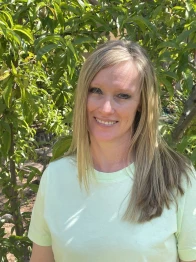
Award-winning, bestselling author, Robbie Cheadle, has published thirteen children’s book and three poetry books. Her work has also appeared in poetry and short story anthologies.
Robbie also has two novels published under the name of Roberta Eaton Cheadle and has horror, paranormal, and fantasy short stories featured in several anthologies under this name.
The ten Sir Chocolate children’s picture books, co-authored by Robbie and Michael Cheadle, are written in sweet, short rhymes which are easy for young children to follow and are illustrated with pictures of delicious cakes and cake decorations. Each book also includes simple recipes or biscuit art directions which children can make under adult supervision.
Robbie’s blog includes recipes, fondant and cake artwork, poetry, and book reviews. https://robbiesinspiration.wordpress.com/
Treasuring Poetry – Meet multi-genre author and poet, Patricia Furstenberg, and a review #Poetry #writingcommunity #bookreview
Posted: March 15, 2023 | Author: robbiesinspiration | Filed under: Book Review, Books, Interview, Poetry, Review, Treasuring Poetry | Tags: "Writing to be Read, As Good As Gold, Author Interview, Book Review, Patricia Furstenberg, Poetry, Robbie Cheadle, Treasuring Poetry | 65 Comments
Today, I am delighted to welcome author and poet, Patricia Furstenberg, as my March Treasuring Poetry guest.
Why do you write poetry?
To me, writing poetry is like being a flâneuse of the literary world.
The history and meaning of flâneuse (with its masculine form, flâneur) derive from the turn of the century, late 19th to early 20th. It defines those men and women who had the time, the inclination, the passion (and the finances, back then) to wonder along the streets of a big city and to observe and be a part of the daily city life. Those who enjoyed taking in the city.
It was after this past holiday, when my family and I covered about 200km on the streets of Romania, in Bucharest and Sibiu, that I learned this expression, flâneuse.
Writing poetry is my reaction to being a flâneuse in a city of words. Writing poetry is like strolling among literary creations, classical or modern (buildings made of words if you wish) and taking in their beauty and rhythm. A turn of the word here, a phrase there, they blend with the breeze, the song of bird, or the memories of my youth (like dappled shadows) – creating poetry.
Do you think poetry is still a relevant form of expressing ideas in our modern world? If yes, why?
Absolutely. Poetry permanently sheds a light on the world; it helps us see our everyday life through a different perspective. It adds colour to a world monotonous in its everyday violence. It also highlights, thus helping us remember, the forgotten beauty of life.
Poetry also creates bridges that unite us, past distances (and I mean social distances) or any other barriers. Poetry is that one constant in times of change. Because poetry helps us understand our emotions and communicate them. It helps us make sense of an uncertain future or of a tumultuous past. Poetry translates, by use of imagery that what – at first – is hard to comprehend and it appears scrambled.
Which poem by any other poet that you’ve read, do you relate to the most and why?
So many times I asked myself this question and the answer varied, but more often it was Robert Frost’s “The Road Not Taken” the poem I most relate with.
The Road Not Taken
Two roads diverged in a yellow wood,
And sorry I could not travel both
And be one traveler, long I stood
And looked down one as far as I could
To where it bent in the undergrowth;
Then took the other, as just as fair,
And having perhaps the better claim,
Because it was grassy and wanted wear;
Though as for that the passing there
Had worn them really about the same,
And both that morning equally lay
In leaves no step had trodden black.
Oh, I kept the first for another day!
Yet knowing how way leads on to way,
I doubted if I should ever come back.
I shall be telling this with a sigh
Somewhere ages and ages hence:
Two roads diverged in a wood, and I—
I took the one less traveled by,
And that has made all the difference.
Life, the simple act of living and of leading a happy and fulfilled family life, are such a tremendous gift – but we tend to take it for granted. I think that contemplating the road that brought us here, as well as the ones followed by our ancestors, is a valuable exercise.
“The Road Not Taken” by Robert Frost is about the choices and the opportunities we encounter in life. But unlike Frost’s poem, I believe that it isn’t the regret over the roads not taken that should overshadow our future, but the excitement for further choices, born out of our past decisions. Life is a continuous maze, and a beautiful and exciting one.
Which of your own poems is your favourite and why?
I enjoyed following the antics of the puppies depicted in my poetry book “as Good as Gold”. There were times when I would write and laugh. When I grew up in Romania we would live in an apartment so we shared some pretty close living quarters with our dog. Whoever looked after a puppy will remember that, at the beginning, they hardly sleep through the night.
While writing “As Good as Gold” I enjoyed mentally watching a puppy conversing with the moon, or meeting an owl (during night-time, of course) for the very first time. Writing from experience… Today I look fondly on those memories. Thus, my favourite poem is “Why, Rain?” where we follow a puppy on his first encounter with a surprise storm during what starts like a perfect summer day, just right for some nature exploration.
Is writing poetry easy for you compared to prose or do you do a lot of editing and revision of your poems?
I enjoy writing poetry for its free form and lack of constraints. Poetry allows my thoughts to roam unrestrained. For me, writing poetry is like finding shapes in the clouds – they can be anything and I won’t be wrong in writing them as such. The reader, in turn, can interpret them the way she sees them and none will be wrong for taking that what her / his heart chose to see.
Writing prose asks for much more structure, although I enjoy it just as much. Writing prose is like building a house.
Poetry is like writing a song. Sometimes you hum it for a long time before you get the melody out on paper just the way you heard it in your mind. Prose is more like writing a symphony. Just as rewarding, perhaps more demanding. Prose will confer a whole set of ideas, where poetry will distil the thought to a perfect, silky thread.
What mode (blog, books, YouTube, podcasts) do you find the most effective for sharing your poems with poetry lovers and readers?
As an independent author with self-published poetry books as well as poems published in various poetry anthologies I find that, today, readers show a fear of commitment towards poetry. I discovered that publishing my poems on my blog or into an online literary magazine I can reach a wider audience than publishing a poetry book.
My review of As Good as Gold, A dog’s life in poems by Patricia Furstenberg

As Good as Gold: A Dog’s Life in Poems is a delightful and uplifting collection of poems about domestic dogs and puppies. Each poem is accompanied by a lovely photograph of the dog through whose eyes the poems is written. I liked that the poems were told from the perspective of the dogs and I thought the freestyle form of poetry suited this book well as each poem is a mini story or adventure.
The writing style is conversational and relaxed. The following few extracts give a feel for the style of the poetry:
“Puppy tiptoes,
Takes a peek.
Sniffs carefully …
What IS that squeak?”
“It’s oval, it bounces, it floats away,
It’s pink like his tongue, it wants to play!
“I’m coming!” barks pup and off he goes.
Down the hill the pink shape flows
And puppy follows suit. It’s just within his reach,”
For cat lovers, there are also a few poems told from the perspective of our feline friends and I loved those especially, as I am a cat owner.
I think this book is a lovely way of teaching children about animals as pets and the writing is appropriate for both children and adults, all of whom will adore the antics and curiosity displayed by the dogs, especially the puppies.
Purchase links
Patricia Furstenberg’s Amazon Author page
About Patricia Furstenberg

Writer and poet Patricia Furstenberg authored 18 books to date. Patricia grew up in Bucharest and was brought up listening to the legends and folktales of Romania’s past. She came to writing through reading, her passion for books being something she inherited from her parents. Her writing career followed a sinuous road that passed through a Medical Degree, practicing medicine, extensive traveling, and it also produced a happy marriage and two children. The recurrent motives in her writing are unconditional love and war, while Patricia’s keen interest for history and dogs brought her writing, through a perfect loop, to her native Romania. Today Patricia writes fiction and poetry. Her poems were published in anthologies by Green Ink Poetry, The Poem Magazine, and Lothlórien Poetry Journal as well as in over thirty online literary journals
Find Patricia Furstenberg
Twitter / Instagram / Facebook / LinkedIn / Goodreads / Book Bub / AllAuthor
About Robbie Cheadle

Award-winning, bestselling author, Robbie Cheadle, has published thirteen children’s book and two poetry books. Her work has also appeared in poetry and short story anthologies.
Robbie also has two novels published under the name of Roberta Eaton Cheadle and has horror, paranormal, and fantasy short stories featured in several anthologies under this name.
The ten Sir Chocolate children’s picture books, co-authored by Robbie and Michael Cheadle, are written in sweet, short rhymes which are easy for young children to follow and are illustrated with pictures of delicious cakes and cake decorations. Each book also includes simple recipes or biscuit art directions which children can make under adult supervision.
Robbie’s blog includes recipes, fondant and cake artwork, poetry, and book reviews. https://robbiesinspiration.wordpress.com/
Growing Bookworms – Meet children’s book author, Darlene Foster, and learn about her Amanda travel series and a review #childrensfiction #bookreview #growingbookworms
Posted: February 8, 2023 | Author: robbiesinspiration | Filed under: Adventure, Book Review, Books, Children's Books, Fiction, Growing Bookworms, Interview, Review, Teaching children | Tags: Amanda in France, Author Interview, Book Review, Darlene Foster, Growing Bookworms, Robbie Cheadle, Writing to be Read | 112 Comments
Today, I am delighted to introduce Darlene Foster, author of the Amanda travel series of books for children aged 9 to 12 years old. I have read several of the Amanda books and enjoyed them all.
Your Amanda stories appeal to me as they take me back to my own childhood readings days of The Famous Five and Adventure series. Was there any particular children’s author who influenced the style of your Amanda series?
That makes me very happy to hear this since the Enid Blyton books were very popular. I didn’t read the Famous Five series growing up in Canada, but I enjoyed The Bobbsey Twins by Laura Lee Hope as they travelled to interesting places, encountered danger and solved mysteries. I also enjoyed Trixie Belden, Donna Parker, and Nancy Drew because the main character in each series is a young girl who overcomes obstacles and solves mysteries. The author who influenced me the most was Lucy Maude Montgomery. She created a character I totally admired. Anne Shirley is spunky, caring, positive and resourceful. Her relationship with her best friend, Diana Barry, is described incredibly well, as is the setting in the charming province of Prince Edward Island.
Are the characters of Amanda and Leah based on any particular person or people?
Amanda is the twelve-year-old me I would have liked to have been. I felt my life was boring living on a farm and dreamt of travelling the world. So there is a bit of little me in Amanda. The great thing about being a writer is that you can recreate your childhood and be whoever you want to be! Leah is a combination of some of my closest friends as well as a dear aunt who is my age. Leah is Amanda’s, Diana Barry.
When you visit schools and chat to the children, how do they react to the travel element of the Amanda books? Do they find it exciting and exotic or do some find it scary and overwhelming?
I am always amazed at how many of the students have done a lot of travelling already. One of my first questions at a school presentation is, “How many of you have travelled to other countries?” There is always a sea of hands. Then I ask if they have been to the country in my most recent book. There are usually some who have travelled there. The classrooms are very diverse these days and many of the students were born in a country other than Canada or the US. The international schools I visit in Spain contain students from all over the world. Children are much more well travelled these days for various reasons. They always suggest I write a book that takes place in their or their parents’ original country. I would say that most children today relate to the travel element of my books. If they haven’t been to the countries I’ve written about, they plan to visit them someday.
What comes first, the setting, characters, or the plot idea?
For me, the setting always comes first. I choose a place that I find intriguing and go from there. The two main characters, Amanda and Leah are always the same, but I have fun coming up with a few new ones for each story. The plot is the last thing I work on and the part I find the most difficult at times. It usually evolves as I write the story.
What are your goals for the Amanda series? Are you planning to make it a long-term series like The Famous Five?
As long as people continue to want to read these books, I plan to continue writing them. There are so many more places Amanda could visit. I’m currently working on book number ten, Amanda in Scotland: The Standing Stones. There are twenty-one Famous Five books; I’m not sure I’ll write that many but you never know!
Books for children are harder to market than books for adults. How do you go about marketing your books and what works best for you?
This is true. Word of mouth is always the best; getting the books in the hands of children is vital so they can spread the word. Visiting schools, libraries, and book stores is effective but not always possible. Over the past couple of years, I’ve been doing virtual visits to schools all over the world. This has been great for getting the students, teachers and school librarians to know about my books. I have learned that I need to market the books to adults as well since they are the ones who actually purchase the books and write the reviews. Being part of a blogging community has worked well for me as everyone is so supportive and helpful in getting the word out about my books. I have also learned a lot from other bloggers/writers. Marketing is ongoing, and there is a huge learning curve.
Thank you, Robbie, for the opportunity to talk about my books and writing in general.
You are a delightful guest, Darlene, and I am thrilled to host you here and discuss your books.
My review of Amanda in France

Amanda in France is the latest in the adventure series of books by Darlene Foster. I have read several of the books in this series, and enjoyed them all. The author has a marvelous way of integrating historical and environmental landmarks into her works in a natural and interesting way that is appealing to young readers.
Amanda and Leah are fortunate enough to accompany Aunt Jenny to Paris, France. Paris is a fascinating location and Amanda is completely bowled over by the sights, sounds, and foods on offer. The threesome are staying in a dormitory attached to the Shakespeare and Company book store, where they will work a couple of hours each day. Amanda, a great lover of books, is delighted and can’t wait to share her book knowledge and enthusiasm with others and promote reading.
Naturally, the girls meet a wide spectrum of new people, including the fascinating but mysterious, Phillipe Lawrence, an older man who is doing research for a book; Jerome, a young man who has become involved with some dodgy friends; and Pierre, who works at the Paris Opera House.
The new characters and fabulous sites set the stage for another exciting and interesting Amanda adventure that includes their visiting famous gardens, graveyards, and helping to save works of art during the fire at Notre-Dame Cathedral.
Congratulations to the author on another exciting and well written adventure story.
Purchase Darlene Foster’s books
Darlene Foster’s Amazon Author page
About Darlene Foster

Growing up on a ranch near Medicine Hat, Alberta, Canada, Darlene Foster dreamt of writing, traveling the world, and meeting interesting people. She also believed in making her dreams come true. It’s no surprise she’s now the award-winning author of Amanda Travels, a children’s adventure series featuring a spunky twelve-year-old who loves to travel to unique places. Readers of all ages enjoy following Amanda as she unravels one mystery after another. When not traveling herself, Darlene divides her time between the west coast of Canada and the Costa Blanca, Spain with her husband and entertaining rescue dogs, Dot and Lia. www.darlenefoster.ca
Darlene has a blog where she shares here stories and adventures here: https://darlenefoster.wordpress.com/
About Robbie Cheadle

Award-winning, bestselling author, Robbie Cheadle, has published thirteen children’s book and two poetry books. Her work has also appeared in poetry and short story anthologies.
Robbie also has two novels published under the name of Roberta Eaton Cheadle and has horror, paranormal, and fantasy short stories featured in several anthologies under this name.
The ten Sir Chocolate children’s picture books, co-authored by Robbie and Michael Cheadle, are written in sweet, short rhymes which are easy for young children to follow and are illustrated with pictures of delicious cakes and cake decorations. Each book also includes simple recipes or biscuit art directions which children can make under adult supervision.
Robbie’s blog includes recipes, fondant and cake artwork, poetry, and book reviews. https://robbiesinspiration.wordpress.com/
Treasuring Poetry 2023 – Meet poet and author Andrew McDowell and a review #poetry #bookreview #Treasuring Poetry
Posted: January 18, 2023 | Author: robbiesinspiration | Filed under: Book Review, Books, Interview, Poetry, Review, Treasuring Poetry | Tags: Andrew McDowell, As the World Burns, Author Interview, Book Review, Mystical Greenwood, Poetry, Robbie Cheadle, Treasuring Poetry, Writing to be Read | 39 Comments
Which famous poet has influenced your poetry the most?
When I was young, I admired William Shakespeare. I was impressed with how he used words to convey emotions and ideas, and I wanted to follow his example. In my junior year of high school, I participated in a Poetry Out Loud contest where we had to recite a poem. I chose Sonnet XVIII (“Shall I compare thee to a summer’s day?”) and won third place. The Shakespearean sonnet was the first poetic form I tried to consistently write in beyond regular rhyming lines. It would not be until college that I began branching out to other forms and eventually free verse.
Which poem that you’ve read has impacted the way you see things in life?
This was a tough one, but one poem that has impacted me is Robert Frost’s famous “The Road Not Taken.”
Two roads diverged in a yellow wood,
And sorry I could not travel both
And be one traveler, long I stood
And looked down one as far as I could
To where it bent in the undergrowth;
Then took the other, as just as fair,
And having perhaps the better claim,
Because it was grassy and wanted wear;
Though as for that the passing there
Had worn them really about the same,
And both that morning equally lay
In leaves no step had trodden black.
Oh, I kept the first for another day!
Yet knowing how way leads on to way,
I doubted if I should ever come back.
I shall be telling this with a sigh
Somewhere ages and ages hence:
Two roads diverged in a wood, and I—
I took the one less traveled by,
And that has made all the difference.
In what way has this poem influenced your viewpoint?
Most people interpret it as about making new trails, which is how I interpreted it as a child. Many times, when I’ve been walking, when I took a turn different from the norm, the last three lines presented themselves in my mind.
However, I’d heard that interpretation is accurate, so I looked it up, and to my surprise, it’s true. Frost wrote it as a joke regarding his friend and colleague Edward Thomas, who often hiked with him and had trouble deciding which way to go. The poem is not only about how choices we make determine where we go in life, but also that we often look back and wonder whether we’ve made the right choice. Though I did not grow up with that interpretation, I have found it to be true and profound.
Perhaps Frost’s way of telling poetry influenced me, too; I remember a professor in college, who taught a poetry class I was in, observed that I liked to end poems with a meaning or lesson, drawing a parallel to Frost.
What is your favorite of your own poems?
This was another tough one, because several have special meaning to me. But of those I have published so far, one that deeply resonates is “Lonely Wolf,” which appeared in the 2019 Spring Edition of And I Thought Literary Magazine. It was written in college as a failed attempt at a pantoum, but after a few rejections, I rewrote it as a villanelle. It speaks to the loneliness I have felt—socially and romantically.
I am a lonely wolf who walks at night.
Amongst the tall pine trees and heavy snow,
Hear my cry to the half-moon shining bright.
***
Young once within a den huddled tight.
The years passed and sadly I had to go.
I am a lonely wolf who walks at night.
***
Embarking for the greatest peak tonight,
There shall I convey my long-held sorrow.
Hear my cry to the half-moon shining bright.
***
Though many have come within my sight,
Why they stand distant I can never know.
I am a lonely wolf who walks at night.
***
Winter’s bitter cold reigns in silent might.
Dark silence only brings light to my woe.
Hear my cry to the half-moon shining bright.
***
Here I stand alone on this rocky height.
Here I do bay up where countless stars glow.
I am a lonely wolf who walks at night.
Hear my cry to the half-moon shining bright.
What’s next for you in your writing career?
My focus right now is fiction. My fantasy novel Mystical Greenwood came out in a new edition, so my primary goal is to complete the sequel. I do have many unpublished poems, so I want to keep an eye out for publishing opportunities. A volume of poetry isn’t out of the question—if I can find a unifying theme (my poems touch on many unique ones).
About Andrew McDowell

Andrew McDowell became interested in writing at age 11, inspired by childhood passions for stories and make-believe. By the time he was 13, he knew he wanted to be a writer. He studied at St. Mary’s College and the University of Maryland, College Park. He is a member of the Maryland Writers’ Association.
In addition to his fantasy novel Mystical Greenwood, Andrew has written poetry, short stories, and creative nonfiction, and he is interested in writing drama and lyrics. He was diagnosed with Asperger syndrome, an autism spectrum disorder, when he was 14.
Find Andrew McDowell
Website | Facebook | Twitter | YouTube | LinkedIn | Tumblr | Goodreads | Amazon
Review of Mystical Greenwood

What Amazon says
Dermot is a fifteen-year-old boy living in a remote village in the land of Denú. He has always longed for something more in his life. Now, everything changes after he sees a renowned creature–a gryphon–in the sky, and then crosses paths with a reclusive healer who harbors a secret.
Soon, he and his brother have no choice but to leave the only home they’ve ever known. They travel with new friends across the land through several great forests, along the way meeting an old man, a family of unicorns, and witnessing an important birth. They must evade fire-breathing dragons and dark-armored soldiers hunting them down, all serving an evil sorcerer determined to subjugate the kingdom, and who will stop at nothing to destroy them.
Denú’s only hope is if a renowned coven returns to face the enemy after years in hiding. Dermot, however, suspects their own role may be more significant than he thought, as he slowly discovers a power which exists amongst the trees and creatures of every greenwood. Can they save those they hold dear? Will Dermot find what he has sought? Or will all that’s free and good be consumed by darkness?
My review
Andrew McDowell has written an extraordinary fantasy tale which centres around the guardians of nature and the Greenwood, called driadors. The plot follows a typical good versus evil path, but the overlay of the protection versus the destruction of the natural environment was unusual, topical, and really fantastic.
Dermot and his brother, Brian, do not get on. Brian is the son who always does as he is asked by his parents and fits the mould of a pleaser, while Dermot is a dreamer and has always felt he was intended for more than his life as an apprentice blacksmith to his father. The rivalry between the two boys comes to a head when Dermot is carried away by a hunting gryphon. Dermot persuades the gryphon to drop him but he is injured during his fall. He wakes up in the care of a healer called Saershe, and her grandson, Ruairi. Dermot realises that they are not ordinary forest dwellers and, following his return home, he becomes obsessed with finding them again.
Brian becomes aware that Dermot has had some sort of unusual experience during his absence and uses this knowledge to stir up trouble for Dermot with their parents. Meanwhile, an evil force in the shape of a fallen driador called Taranis, is lurking just beyond the village, waiting for an opportunity to wreak havoc and destruction and restart an old battle against the driadors. Dermot and Brian will have to learn to trust and rely on each other, and harness the power of nature if they want to save the Greenwood, their friends, family, and themselves.
This is an unusual and well paced story with interesting characters, and these elements more than makes up for the odd moments in the book when Dermot and Brian’s emotional reactions to situations seem slightly lacking in depth or incongruent to the circumstances.
The author has great potential as a writer and I would love to read the next book in this series and find out what happens next in the battle for control between Taranis and the driadors.
Purchase Mystical Greenwood
Andrew McDowell Amazon Author Page
My review of As the World Burns: Writers and Artists Reflect on a World Gone Mad

What amazon says
As the World Burns: Writers and Artists Reflect on a World Gone Mad is an anthology of poetry, prose, essay, and art inspired by the unprecedented events of the year 2020. It embraces fierce and raw creative works relating to life during the Covid-19 pandemic, Black Lives Matter, Donald Trump, and the economic uncertainty and horror of the last eight months. One hundred and fourteen writers and artists spanning ten countries and 30 states are represented in this powerful volume. It is both a story of survival and an act of resistance.
“We speak with many voices, to the damage wrought in these violent, fevered months. Let us never forget or turn away, from what is just, what is necessary, to keep light alive in this world.”
My review
This is an interesting recording by numerous contributors, of the status of the world and society in the run up to the Covid lockdowns, and during the subsequent on-going pandemic. The writings, which comprise of mainly poetry, but also some essays and visual art pieces, also cover events that ran parallel to the lockdowns and pandemic that had an impact on society and politics.
Reading this anthology is an adventure as the messages are intense and vivid and the styles of writing hugely varied due to the significant number of contributors. Although not all the styles of poetry appealed to me, they were all memorable due to the strong emotional messaging, and well worth reading.
My favourite poems are as follows: Falls the Shadow by John W. Leys, I Think the Birds don’t Care by Kelsey Hontz (the words “Somebody has mixed up the two themes of apocalypse and paradise, which would be a fireable offense if anybody were still in the director’s chair for this year of hindsight.” really resonated with me.), Lately by L. Stevens, Quarantine by Andrew McDowell, Upon Waking in a Pandemic by Christine E. Ray, Choice Perhaps by Jane Dougherty, Thirteen Ways of Looking at Life before the Virus by Leslea Newman, Am I Angry? by John W. Leys, Virus by Erik Klingenberg (nightpoet), and Tumbling by Merril D. Smith.
Two of the essays, were particularly interesting to me. I-Soul-Ation by Dr. Sneha Rooh. The closing words of this essay have sadly not come to fruition, in my opinion:
“I would like to think that we will hug people longer, be grateful to be able to work, that we will smile brighter when the masks come off and we’ll let the smiles fully enter our hearts, that we will be careful abut the lies sold to us and remember that we are precious mortals with precious lives and an immense ability to connect and care.”
I am of the view, that the world has returned to its previous status quo with alarming speed and that as a species, we have learned nothing from the lockdowns and the pandemic.
The other essay I particularly enjoyed was Serendipity by Kim D. Bailey.
This book is an important documenting of life during this difficult and stressful time of life when the entire world united to face a common enemy. Sadly, we have still not learned our lesson, as I mentioned above, but perhaps some of us have found more courage to fight for a better eventual outcome for our planet and for humanity.
Purchase As the World Burns
About Robbie Cheadle

Award-winning, bestselling author, Robbie Cheadle, has published thirteen children’s book and two poetry books. Her work has also appeared in poetry and short story anthologies.
Robbie also has two novels published under the name of Roberta Eaton Cheadle and has horror, paranormal, and fantasy short stories featured in several anthologies under this name.
The ten Sir Chocolate children’s picture books, co-authored by Robbie and Michael Cheadle, are written in sweet, short rhymes which are easy for young children to follow and are illustrated with pictures of delicious cakes and cake decorations. Each book also includes simple recipes or biscuit art directions which children can make under adult supervision.
Robbie’s blog includes recipes, fondant and cake artwork, poetry, and book reviews. https://robbiesinspiration.wordpress.com/
Chatting with the Pros: Interview with author RA Winter
Posted: January 7, 2023 | Author: kayelynnebooth | Filed under: Book Release, Books, Chatting with the Pros, Fantasy, Interview, Mythology and Legend | Tags: Author Interview, Chatting with the Pros, Fantasy, Mythology, RA Winter, Themis's Revenge, Writing to be Read | 5 CommentsIt’s been several years since I posted a “Chatting with the Pros” interview, but today I have a very special post with an author I’ve known for several years, In fact, she was a contributing author to the original Ask the Authors writing reference anthology back in 2018. She’s got a new book coming out tomorrow, Themis’ Revenge. It is book 4 of her Queens of the Underworld series. She’s a multi-genre author and she’s joining me here to share with us about her writing and her new release, which is always very exciting.
About the Author
I started writing under my married name, writing genealogy books as history was my first love. Now I write stories that give me joy-be it fantasy, magical realism, ghosts, urban fiction, or romance. All my novels contain strong females with sass, sarcasm, and humor. You know, women exactly like me. I love animals and it doesn’t matter what kind either. I’ve even petted a crocodile in Egypt-tried to take him home too. Apparently, that’s not allowed.

Our Chat
Please tell us a little about yourself to start out.
RA Winter: Currently, I’m in Pittsburgh, PA but I’ve lived all over the world; Turkey, Germany, Egypt, Jordan and tons of states in the US. I love to travel but hate to fly! I’ve been working as Federal Agent since 2013, I won’t tell you which agency, but lets just say that it’s interesting.
You write what your heart tells you too, making you a multi-genre author. What are the genres that you have written in?
RA Winter: I’ve dipped my toe in a few genres and I always include romantic elements. Contemporary, magical realism, low-fantasy, high fantasy, western fantasy (which is becoming a thing. I finally got to write a Sleeping Beauty retelling at a rodeo with spirits!), historical, paranormal, Greek myth, sci-fi and I’ve also published nonfiction.
What is your favorite genre to write in so far? Why?
RA Winter: I adore writing fantasy. I love the descriptions, the world building-my world-my rules! My novels end up being in the 300-400 page range so they aren’t your typical 1000 page high fantasy.
What genre do you classify Themis’ Revenge? Why?
RA Winter: Got Zeus? I do! I’ll take you on a journey from Olympus to Hades, Tartarus and into the real world. I have dragons, werewolves, arrogant gods (yes, Zeus), sexy scenes, a romance with Ares and Death (oh my!) and that one little pesky secret and mystery that is threaded through each book. Can you guess the ending? (Bane’s Wish will be out in April). Multiple genres collide in this series with myth-based fantasy action being the main focus.
What inspired the Queens of the Underworld series?
RA Winter: You remember Supernatural, the TV series? Well, in the show, Death is a person and I was like-she needs a romance. Then the whole-how do I bring Death alive idea started. Then I had to have a bad guy, and a world to build on, so I tinkered with bits of mythology to find the right pieces. I had taken courses in Greek mythology in college years ago and loved all the backstabbing, romance, and intrigue and wanted to capitalize on my knowledge. I actually took a couple more classes to freshen my memory and spark new ideas.
What do you enjoy about writing the books in this series?
RA Winter: I do not like stories to end! I love to read. If I find a world that I enjoy and characters that I’m invested in-I don’t want to put the novel to rest. It’s like stranding them in no-man’s land and walking away. Writing a series is a way to keep characters alive and build on the setting/plot/features from prior books until those unruly characters are ready to die. It’s also much more complicated to write. You have to remember picky details like eye color, sex, boots or shoes? WTF is his sons name? so a story bible is imperative. As is a wonderful, patient, honest editor.
Themis’ Revenge is Book 4 in the series. Are these stand-alone novels or do readers want to pick up the previous books in the series before reading Themis’ Revenge?
RA Winter: Themis is the prequel. It can be read as a standalone or at any point in the series. I would prefer that you read it first-but that’s up to the reader. It takes place over four-thousand years ago but the consequences of Themis’s actions are being dealt with today. It digs deep into the stakes of the series. If you read Themis first, you’ll be invested and hopefully solve the mystery that’s driving the series before others do. The other books can be read separately, but you might miss some clues! If the stakes/worldbuilding aesthetics are not paramount to you and you’re just looking for the romance between say–Death and Ares–then jump into Death’s Lover and hopefully you’ll fall in love and come back for the others.
Could you tell us a little about the story?
RA Winter: She is Themis goddess of Justice, only she can write the rules that govern men. Zeus, king of the gods, has other ideas. Not only did he cheat on her, but he changed her laws. Horrified that Zeus has doomed an innocent man to be fed to a Titan god, Themis must descend into the depths of Hades to save the damned soul- without Zeus’s knowledge.
But an omnipotent being guards the prison of Typhoeus. One with blood pulsing through his veins. He’s neither god nor demon, (but sexy as hell with his dark hair, tight abs, gruff manner), and he refuses Themis entry into Tartarus. With no way around him, she must go through him- and step directly into his arms.
In a race against time, Zeus and the Titan god’s hunger, Themis is willing to sacrifice everything to save an innocent soul. But is she willing to risk her heart again?
What was the biggest challenge for you in writing this story?
RA Winter: Keeping the characters true to their personalities. That’s why Themis’s Revenge starts over four thousand years ago. I had to use the earliest myths of her and show her evolution from a ‘right-wrong-no gray area’ goddess to one who sees that the law shouldn’t be so cut and dried-and neither can relationships!
What was the most fun in writing this story?
RA Winter: Planting the seeds for my big ‘Ah Ha-Gotcha’ moments. I want the reader to be able to see those bits and pieces and put it together-but have Themis totally blindsided and missing those clues. Reactions are golden.
What’s the best piece of advice you were ever given?
RA Winter: For the love of God woman, life can’t be planned-process, improvise, and continue -KC Freeman, author extraordinaire and my overworked editor. I’m a Virgo. I organize and plan everything. I have schedules for daily, weekly, monthly and over the course of a year.(Sometimes I even do hourly schedules. Ugh.) I have this horrible internal flaw. I follow through then something happens where I can’t complete a task in the time allotted and bam! I quit because I can’t fulfill my plan. It takes me a while to reorganize and return. After a bout of Covid, it took me two years to start writing again. I just couldn’t stick to a schedule I even have an exercise and diet chart. If I get ill-I can go from running 4 miles a day to a year later wondering why I can’t walk 4 miles when I finally restart my plan.
What advice do you have for aspiring writers?
RA Winter: You have to write it. Take it in chew-able pieces. Have a vision and stick to it-if you have the ending-you can write the rest. I finished my first book because someone told me that I never would publish. My first novel was a graceful uptick of my middle finger in his face. Wonderful image to this day. Hey, there are now 13 books, 2nd book of the year in the NR, and a USA Today Bestselling author title at the end of my name-so maybe I should thank him?
Um. No. I’m waiting on my next screw-you moment. It’s the challenge that keeps me going.
About the Book

Zeus rewrote her laws. Now, Themis, Goddess of Justice will extract her revenge.
She is Themis goddess of Justice, only she can write the rules that govern men. Zeus, king of the gods, has other ideas. Not only did he cheat on her, but he changed her laws. Horrified that Zeus has doomed an innocent man to be fed to a Titan god, Themis must descend into the depths of hades to save the damned soul- without Zeus’s knowledge.
But an omnipotent being guards the prison of Typhoeus. One with blood pulsing through his veins. He’s neither god nor demon and he refuses her entry into Tartarus. With no way around him, she must go through him- and step directly into his arms.
In a race against time, Zeus and the Titan god’s hunger, Themis is willing to sacrifice everything to save an innocent soul. But is she willing to destroy her own soul by opening her heart again?
____________________________________________________________________
Want exclusive content? Join Kaye Lynne Booth & WordCrafter Press Readers’ Group for WordCrafter Press book & event news, including the awesome releases of author Kaye Lynne Booth. She won’t flood your inbox, she NEVER will sells her list, and you might get a freebie occasionally. Get a free digital copy of her short story collection, Last Call and Other Short Fiction, just for joining.





